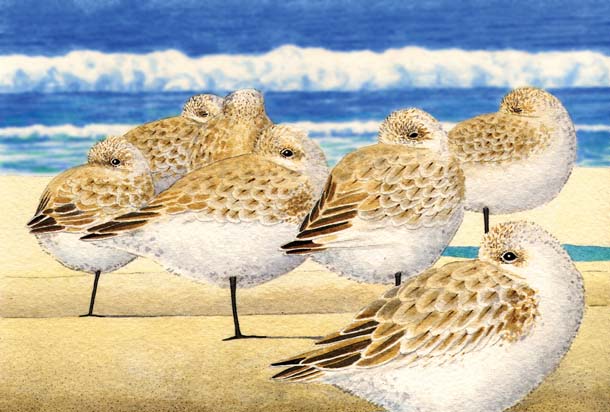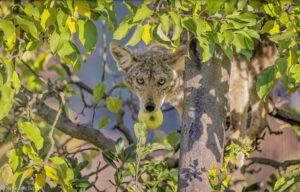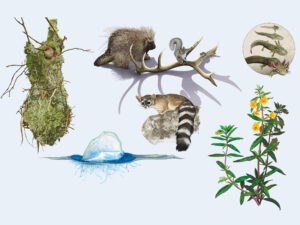There’s nothing like a good night’s sleep. But we often toss and turn trying to get comfortable, worry over homework, or regret that 12th chocolate chip cookie that’s given us a stomachache. We need sleep to replace worn-out cells and rebuild damaged muscles, smooth out frazzled nerve impulses–essentially reboot our flesh-and-blood hard drive.
Wild animals need sleep too, and for the same reasons. But do all animals sleep the same way? Are there different kinds of sleep? How do we learn about the ways other animals sleep?
Birds have lots of different sleep patterns. Hummingbirds go into such a deep sleep that scientists consider it almost like hibernation. The tiny birds burn so much energy when they are awake that this deep sleep is the only way for them to make it through the night without running out of steam and dying.
Robins, like most perching birds, retreat into heavy vegetation to get a little shelter and hide from predators. Once they’re nestled down for the night, their toes automatically lock around the branch to prevent any midnight tumbles into the underbrush.
- Illustration by Tim Gunther, www.gunthergraphics.biz
Flocking shorebirds and waterfowl peep rather than sleep–the flock sleeps with one of its collective eyes open. That’s not great for the younger birds, who have to hang out at the edges of the flock and watch for danger every few minutes. Older birds higher in the pecking order get to snuggle securely in the center of the flock. Shorebirds also sleep on one leg to stay warm: Legs are the largest unfeathered parts of a bird, and they can lose heat rapidly, especially when the bird is roosting in a shallow pond.
That’s not quite as complicated as dolphins, who have been recorded shutting down half of their brains while sleeping. As air-breathing mammals, they must still come to the surface to breathe, and they slowly dive and surface as one part of their brain operates enough to maintain life. All nonessential functions take a break, and the dolphin gets some downtime to rest.
Cold-blooded animals like lizards sleep in ways similar to the hummingbird. Their metabolism slows as the temperature dips. That means waking up quickly is not easy. Many reptiles sleep in the safety of a rock pile, burrow, or other hiding place, so they can fully wake up before coming out in the open.
Not surprisingly, big predators like mountain lions sleep more often and more soundly than the animals they eat. Lions may sleep for 18 hours a day while the deer they feed on have to be content with catnaps (or anti-cat naps!).
How do scientists figure all this stuff out? Well, partly just by watching animals do their thing. But sleep can be examined more closely using a device called an electroencephalograph, which records brain wave activity and shows a measurable difference in brain activity between wakefulness and rest.
It’s well documented that sleep helps the body restore itself, whether you’re a bird, a dolphin, or a person. So go ahead, take that nap and never feel guilty again.
Get Out!
You don’t have to go on night watch to see sleeping animals. Visit a local pond or lake to watch ducks and geese taking naps with their heads tucked under their wings. Count how many seconds their eyes are open or closed.
Sit in a wooded area around dusk. You should see robins, mourning doves, sparrows, and other songbirds heading for cover in the leafy canopy. Listen to the sounds they make as they get comfortable for the night.
Visit a nearby zoo. Nocturnal animals will be curled up sound asleep. Search for daytime animals napping. Look to see if sleeping animals have an ear perked up to detect noises while they grab a few winks. Watch the flamingos rest while standing on one leg. Bring binoculars and watch their eyes to see how frequently they peek around.

.jpg)




